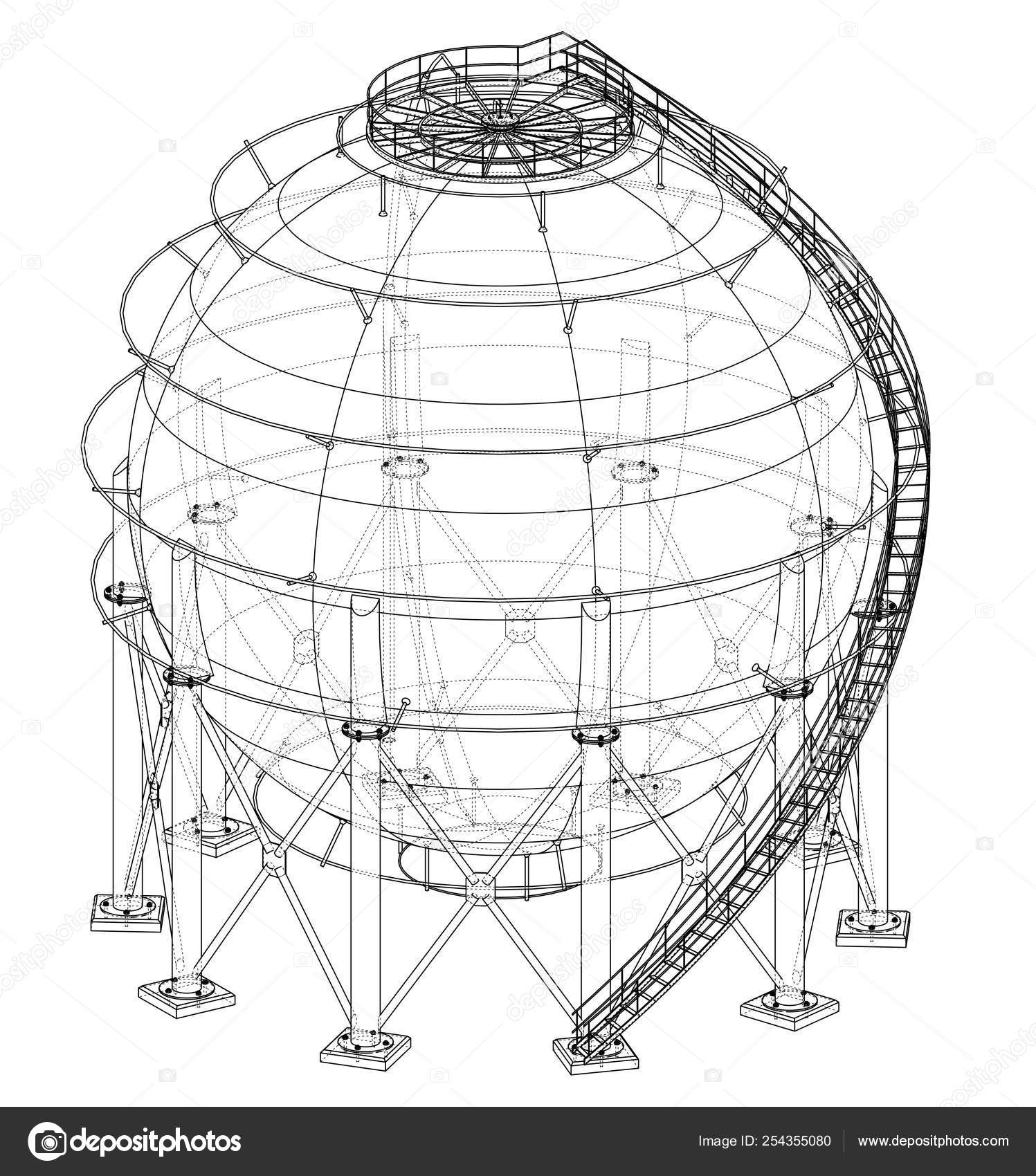Spherical Storage Tank Design
Spherical Storage Tank Design:- The most common shape of a storage vessel is a cylinder with two heads which are either, hemispherical, elliptical or tori-spherical. Spherical vessels have larger surface area per unit volume.
The advantage of a sphere over a horizontal cylinder with the same volume is increased by the static head because it is a practice to let the thickness of the sphere vary from top to bottom as the pressure increases. Spheres are preferred for large capacity storages. Spherical vessel is good choice above 10 m diameter.

An important aspect in the design of spheres for
liquids is the considerable weight involved. Such spheres are normally
supported upon vertical legs attached to the vessel at its equator.
In order to withstand the compressive stresses the total cross sectional area
of the lags must increase linearly with the weight of the vessel.
The volume of spherical vessel is proportional
to the third power of the vessel diameter.
As the diameter increases, the length of the legs also increases. Weight of the
legs is proportional to D4. Increase in length of legs is
unfavorable from the point of view of the angle of buckling and dynamic
stability.
For large diameter spheres, the weight of the supports is considerable and
constitutes a significant proportion of the total cost.
An alternative supporting structure for a spherical vessel is to rest the sphere on continuous
concrete foundation having outside diameter about 50 % of the diameter of the vessel. The shape of
the upper surface of the foundation creates evenly distributed pressure.

Another alternative for the supporting structure of a spherical vessel
is to rest it over a reinforced
conical skirt structure. It has excellent dynamic properties and low buckling
load.

Horton sphere consists of the following portions
- Cancer
- Equator
- Capricorn
- Top and bottom plates
All these plates are produced by hot pressing. The fabrication of horton sphere by the use of spherical plates offer the following advantages.
- Number of welded joints is reduced. This saves cost and improve the strength of sphere.
- Saving in raw material is achieved. Minimum thickness required as per pressure can be used.
- Manhours required for assembly and fabrication is reduced.
- Overall appearance of vessel improves due to lesser number of welded joints.
The plates are rolled to spherical profile in four roller plates bending machine and the profile is checked by volumetric checking template.
At the equator plate (with column), pad (saddle) is welded and then on the pad, column stub is welded. Normally top and bottom caps with nozzles welded and equator plates with or without welded pads (saddles) and column stubs are shop stress relieved because the columns come in contact with foundation concrete pedestal.
If the stress relieving is carried out at site, the heat transfer from the steel column to the concrete foundation can crack the concrete pedestal and can cause a major hazard.
Cancer plates and the top are assembled on the top of the equator. Saddle plates (pads) are also assembled with equator plates.
































